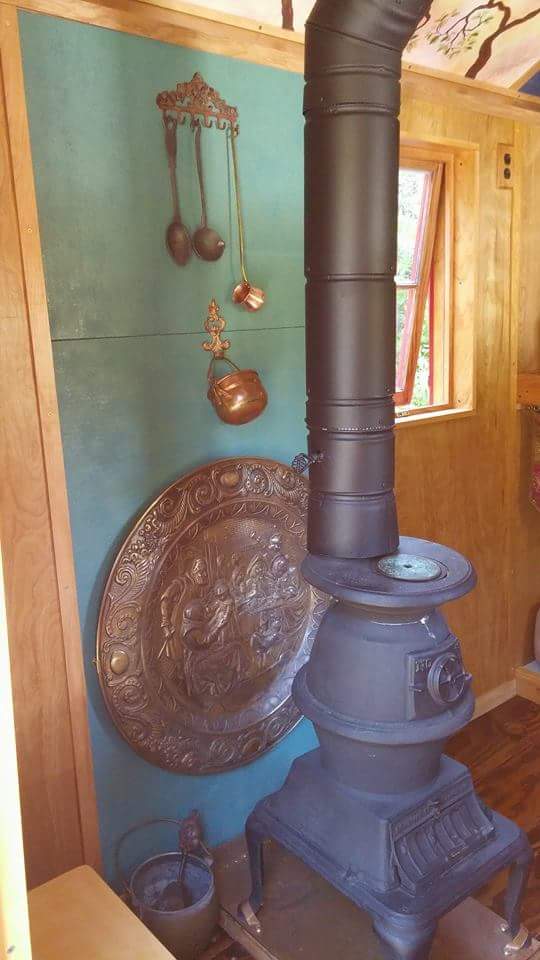Solo Construction of a Vardo: It Can Be Done!
Amber Shelley-Harris built a beautiful vardo. On her own. With limited woodworking skills and tools. Here, she shares some of her experiences and photos with us...enjoy!
"I built Celestine over the last year as a first project. I designed her to live outdoors in the Northwest weather and fully connect to campground shore power and water. Celestine has recently made her maiden trip and traveled quite well. As with any first project, issues have cropped up that need adjusting or fixing - but overall, a great learning experience.
Building a modern vardo, you are pretty much on your own. You can look to old plans and even old wagons for ideas, but if you plan on towing this by car at 55mph and living in it or using it you would have to completely re-engineer any old blueprints.
Back in late May of 2014, I purchased a custom 7k GVW 7' x12' standard tubing Deck Between flatbed trailer with no ramps, bumper bar or stake pockets from Great Northern Trailer Works in Sutherlin Oregon (the manufacturer). I paid $2,000 for it, a terrific deal for the quality of the work and heavy duty welding. It came standard with spare tire, electric brakes on all four wheels, breakaway system, chain basket in the front and pressure treated oiled deck (that I left beneath my insulated waterproofed subfloor). You can also ask for no stickers, a big plus in the appearance of the finished wagon. This was my foundation.
I basically built Celestine using standard 2x4 construction built to hurricane, earthquake, and marine standards (with Simpson ties to code). At 55 mph down a freeway, a rainy day is a hurricane. Our highways will also shake a building to 9.0 on a Richter scale. Her walls are both bolted through the sill plates and sub floor to the trailer deck AND J bolted to the welded frame of the trailer itself underneath. This 'theoretically' allows you to remove the structure and therefore insure it as a "load" while traveling, depending on your insurance carrier.
The walls are sheer paneled with 3/8 CDX that is glued to every stud and screwed in every 8 inches. All work is predrilled and screwed together- no nails anywhere, as they will back out under stresses and vibration. With EVERY step of the construction, every seam, crack and misplaced screw hole is caulked as if you were building a boat. I can't stress that enough. When you are driving at 55mph, the vacuum inside the structure combined with the pressure on the outside will flood a wall from a pinhole or misplaced screw. The only window I built into the front wall is a vintage porthole for that reason. It is caulked with butal caulking the same as a boat and has a neoprene gasket.
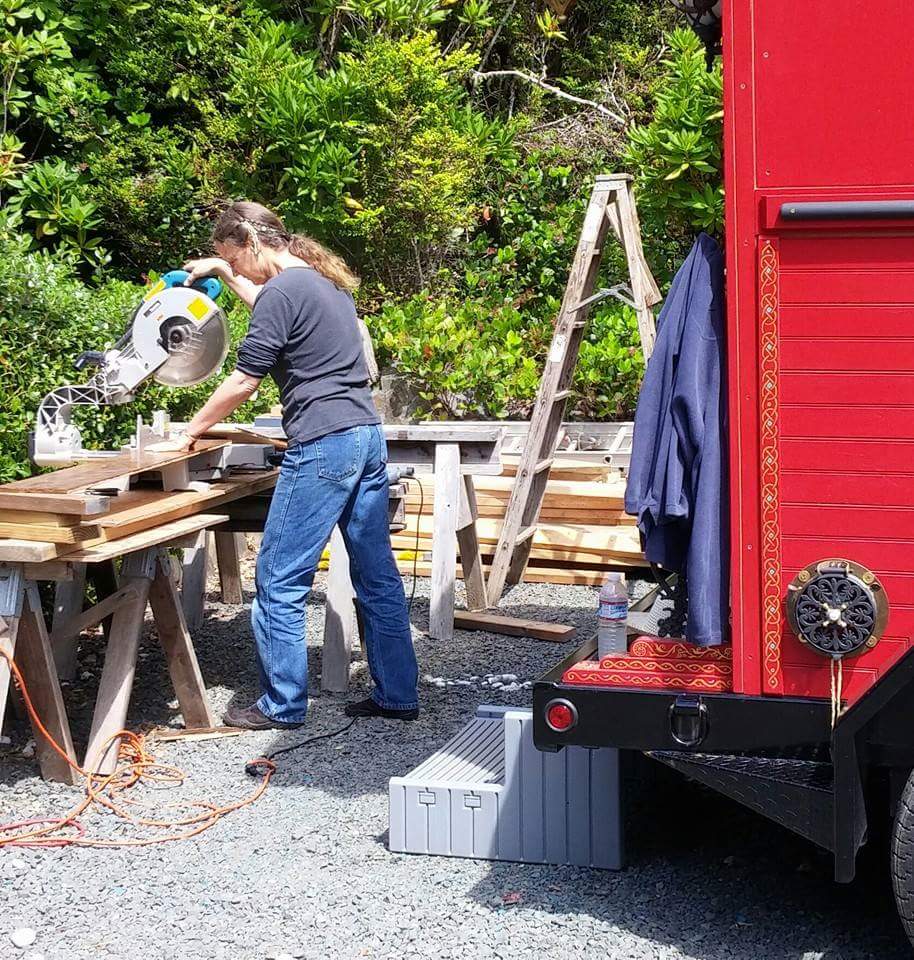
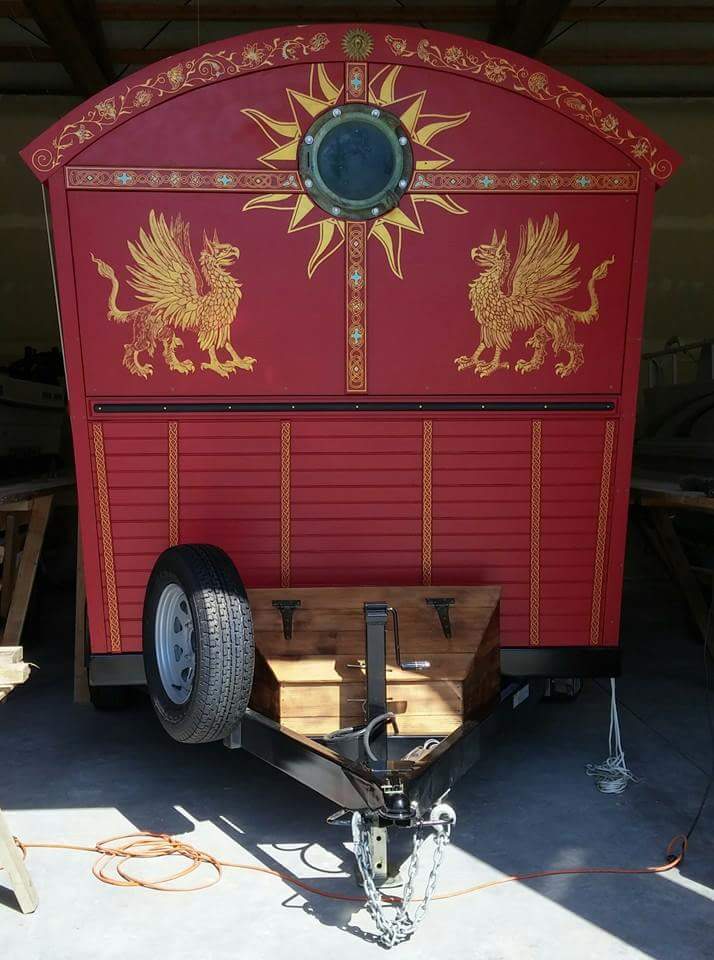
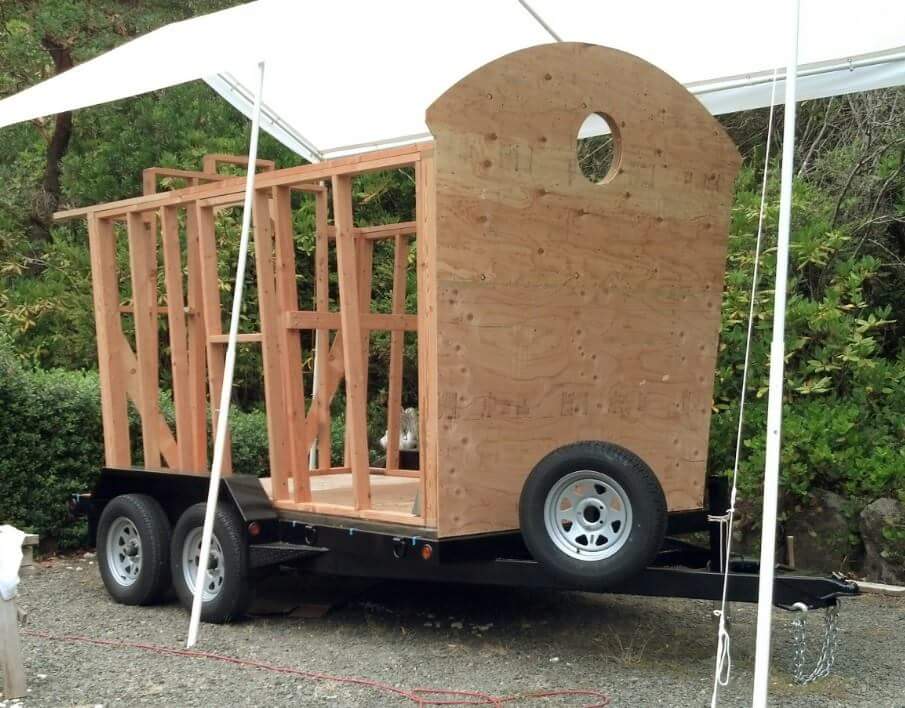
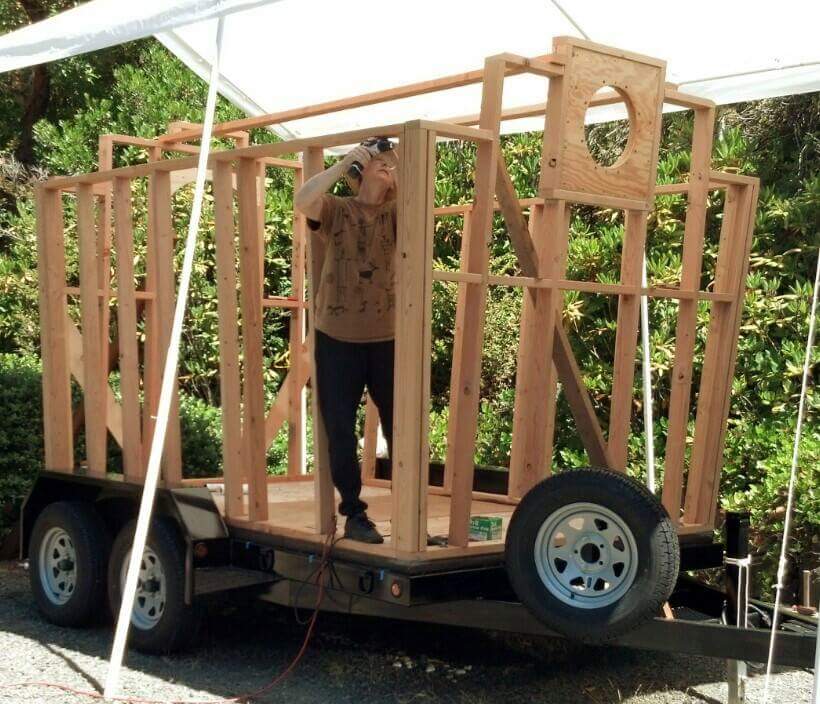
I spend uncountable hours on the internet at night researching details, attempting to contact other builders and asking questions. Many of my drawings were done during and after the work as planning too far ahead in most cases is impossible with a prototype. I also found that most American vardoes were prototypes as every trailer base is different and if you use someone else's plans they will need to be completely customized to your trailer.
A year's worth of working 10 or more hours a day, 7 days a week, is what it took to build one of these by myself. If you had a big enough garage to build it in, help from other people and a table saw, it would probably take less time - but you really would have to have a good working relationship with the help, as building one of these is solving one problem at a time and most days you can't even plan what you'll be doing tomorrow."
Congratulations to Amber on the successful completion of Celestine- the dedication and attention to detail that went into her building is clearly visible!
Amber has been kind enough to offer more pictures, details, information, and encouragement to anyone attempting to build a vardo. She can be reached at ambershelleyharris55@gmail.com.
Intermediate level woodworkers who want to build skills before attempting their vardo build
can learn fine carpentry during our Built Environment series. VA Approved & scholarships are available.




